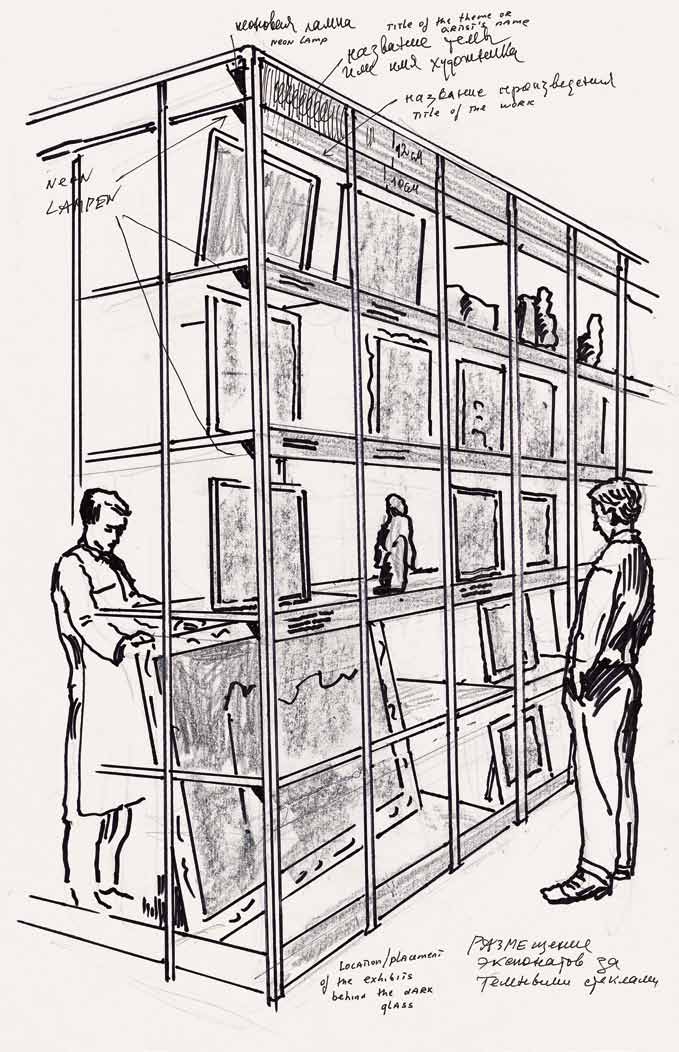The Museum’s Archive
with Emilia Kabakov
YEAR: 2009
CATALOGUE NUMBER: 184
PROVENANCE
Model of a public archive for the collection of Kunsthaus Zug. The concept has not yet been realized.
EXHIBITIONS
Kunsthaus Zug, Switzerland
Projekt Museum: Ilya und Emilia Kabakov – “Kaaba” (Project Museum: Ilya and Emilia Kabakov – “Kaaba”), December 6, 2009 to November 7, 2010
DESCRIPTION
The main block of storage cubicles is an irregularly shaped long rectangle. On the outside it looks like a solid black block from floor to ceiling that the viewer walks around, winding up at the exit.
This black block (in appearance resembles somewhat the sacred rock “Kaaba” n Mecca) is located underground and is contained in a cement space with rounded edges. (The walls are made of cement using a vertical mold.)
There are two doors into the proposed future warehouse and two doors to the street as fire exits. Inside of the block, there is a corridor for employees.
In each cubicle, there is a shelf and an individual lamp. The lamp is neon, it does not get hot and it remains muted so as not to ruin the work it illuminates. The title of the work, the name of the author, and a commentary are illuminated at the top of each cubicle. At the very top of the entire unit are texts explaining the theme and selection of objects in a given group of cubicles.
The size of each cubicle is 62 x 62 cm. The plate above each cubicle for the text is 10 cm, and the thickness of the dividers is 0.25 cm.
It is proposed that a round aperture surrounded by a concrete barrier be made in the park above the underground archive. Viewers could peer inside and see down below the semi-illuminated display cases and the objects contained in them.
CONCEPT OF THE INSTALLATION
The difficulties in displaying any exposition consist of the fact that no matter how few objects we actually display in a given space, the viewer’s attention is dissipated because there is too much information in the field of his attention. How can this concentration of attention be augmented, how can the viewer be expected to concentrate on only one thing? The proposed project is intended to resolve this problem.
Exhibition objects fill up all the cubicles in a tall, long structure that extends from floor to ceiling. The front wall of each cubicle is covered with dark glass in such a way that the entire structure looks like a solid dark surface. A light is slowly turned on in one of the cubicles and the object inside (a sketch, a painting, a sculpture) is illuminated, then a light is turned on in another cubicle, while the light in the first one is slowly extinguished. Hence, the entire wall is transformed into a magical performance where the works of art preserved in the archive appear out of the gloom (that is, out of the darkness), first here, then there. Opposite the “wall,” there are two rows of benches where the viewer can sit and concentrate on each fragment of this performance and escape from the state of being a “tourist” who is just running past.
Images
Literature









